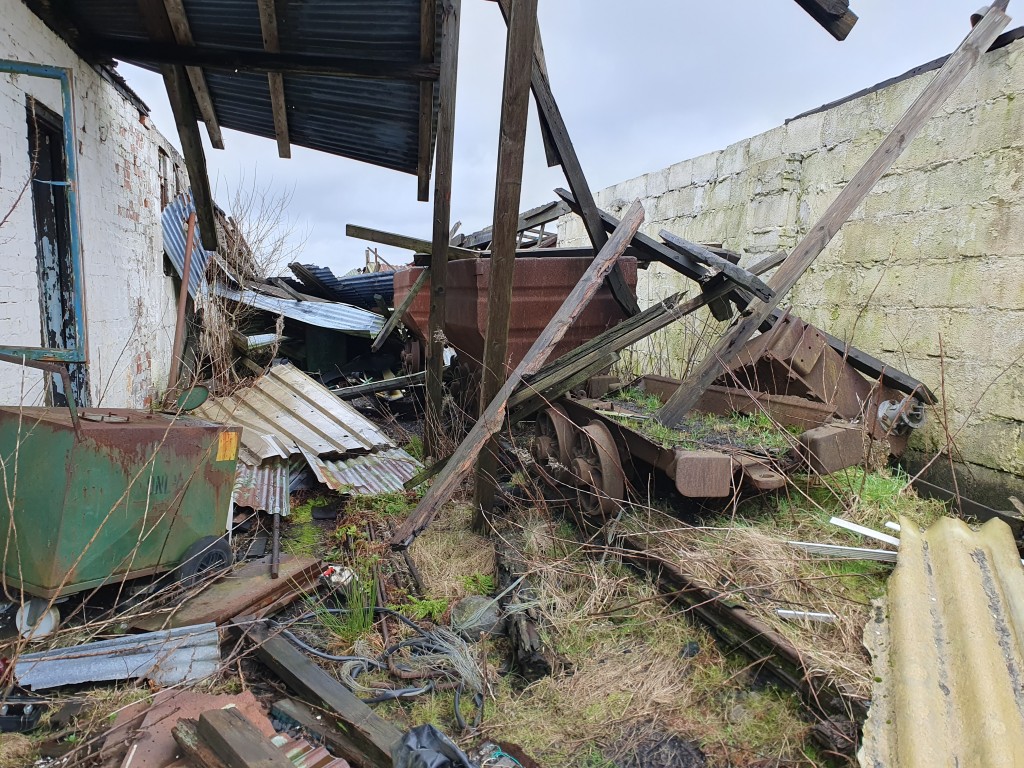Written October 2023
Probably the most complete ‘small’ mine still surviving.
Most of the surface remains still exist, the mine buildings are mostly Ex-British Rail vans still containing remains of the compressor system and winding engine. There are still mine carts on site although the buildings roof has mostly collapsed.
Both mine entrances are gated and located in a yard which is still regularly used.
November 2024 Update:
The remains of the mine have been demolished. All that remains is the large 1990s era building which was used for the storage and as a workshop for mine vehicles.
1920-24 Guest, Keen and Nettlefolds Ltd
Abandoned 1924-55
1955-58 TI Shankland
1958-66 E Shankland
1966-97 Cae Glas Colliery Co
The mine worked the No 3 Rhondda, No2 Rhondda and Tyladu seams.
In 1958 three people were killed (including the owner) when they went into some old workings to indentify the water level before being overcome by black damp (co2)
In 2013 planning permission PDF was granted for a further 15 years. Mr T Rowe (The owner of Cae Glas Colliery Co.) proposed to mine 200,000 tonnes at a rate of 10-12,000 per year, with the coal being exported via the Heads of the Valleys road. The proposal suggested employment for 6-9 workers mostly on weekdays. The permission also stated that land must be restored and buildings demolished by December 2024.
The site is private land but can be viewed from adjacent access land.
External Links
Publications (2)
- Booth, A.J.; Industrial Railway Society (1995); Small Mines of South Wales, Volume 2; pp. 20-21
- Cooke, R.A.; Lightmoor Press (2018); Gazeteer of Coal mines in South Wales and Monmouthshire




















